The mystery inside the mummies has a real human face in Egypt
More than 2,000 years ago, when the Romans invaded Egypt in the 1st century BC, they introduced an art form known as "panel painting" or parquet painting. The Egyptians then used this very art form to replace cardboard portraits, which they used to place on top of mummies to bring their vitality.
Unlike plaster masks mixed with plaster that can only depict cartoon faces, paintings on wood can almost capture the mummy's surreal face, turning it into technology. portrayed people in more detail than ever at that time.

Panel painting was introduced to Egypt since the Roman rule
A mummy before burial will be portrayed on wood. The mummified person would then place the piece of wood on top of the head, obscuring the location where the real face was. They braced the frame around the picture and then wrapped the cloth over the whole mummy, just to reveal the correct position of the painting.
These mummies are individually nicknamed " Fayum mummy portraits", or portrait mummies of the Faiyum basin, an area west of the Nile where they are most commonly found. From a distance, it feels like the mummies portrait of Faiyum are just like a living person lying in a sleeping bag.
Archaeologists estimate there are thousands of Faiyum mummies in Egypt. But most of them have lost the wood on their face. " There are only about 100-150 portraits still associated with the mummy, " said Stuart Stock, professor of cell research and developmental biology at the Feinberg School of Medicine, Northwestern University, Chicago.
One of these mummies is currently preserved in the collections of the Northwestern University Museum of Art. The task that they were assigned is to be able to both preserve these mummies intact and be able to study what is inside them.

A mummy with a real human face is housed at the Northwestern University art museum
And to see through the layers of cloth wrapped around this mummy, as usual, scientists like Professor Stock will use X-rays. However, the technique they use this time X-rays is a technique used for the first time: diffraction in conjunction with computer CT scans.
New technology to see through the mummy
When you arrive at the hospital and step inside a CT scanner, you will hear the machine whirring like a rotor spinning around you. These are X-ray guns and each rotation, they shoot out invisible beams of high energy that can penetrate your body.
On the opposite side of the gun, a sensor collects the X-rays through, reconstructs their path, and produces a 2D sliced image of your body. These 2D layers of images overlap, the computer will create a 3D image to help doctors see your overall body, find out the damage inside bones or soft tissue structures.
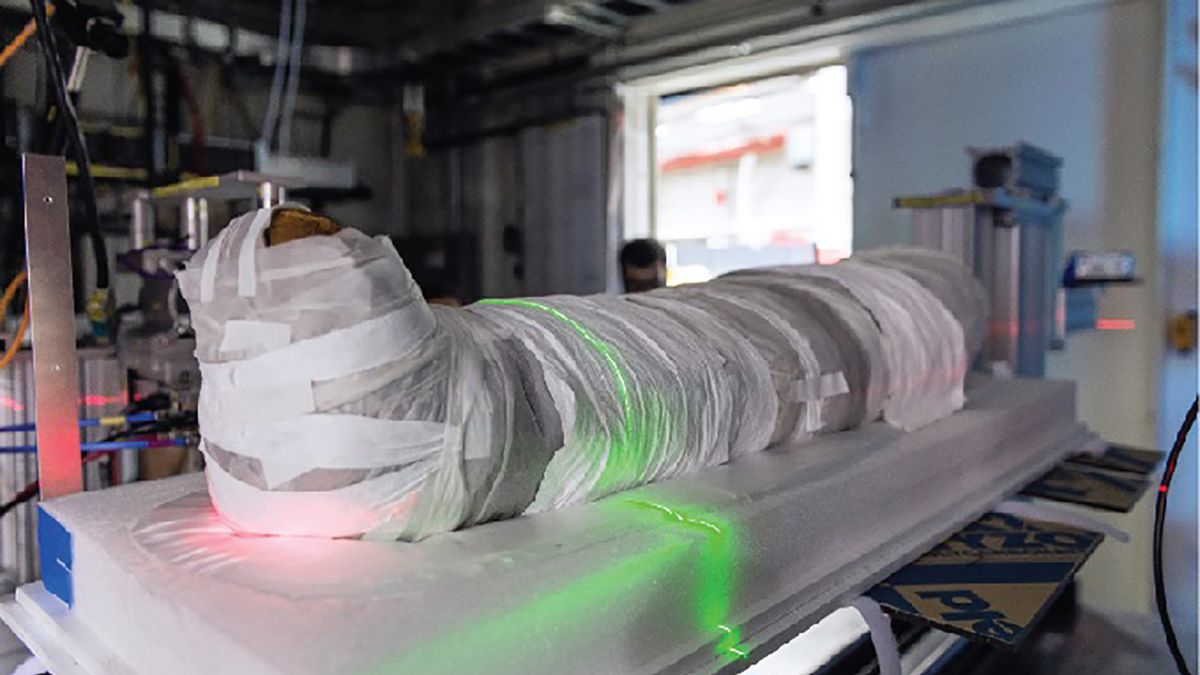
The mummy was placed on an X-ray scanner
In mummification studies, archaeologists will also bring their specimens to the hospital and put them in such CT scanners. (It's a fact that you should know, at some hospitals archaeologists visit, sometimes the CT scanner you are lying on today was lying down by an Egyptian mummy yesterday.) .
But while CT only record the X-rays shot through the mummy on the opposite side, shooting techniques diffraction Professor Stock used also allows recording both X-rays "stray" r a directions, sometimes intersecting like ripples on the water's surface.
Analysis of these diffraction streaks could also allow scientists to reconstruct the inner 3D image of the mummy, and to include the material made of them (which is not possible with CT scans).
Because each surface that X-rays shoot at and different materials are inside the body, diffraction results will have different properties, reverse these features by algorithm will produce an image. penetrating the material to which the X-ray is targeted.
"This is the first time that X-ray diffraction has been used on an intact mummy ," says Professor Stock. " Combining both CT scans with X-ray diffraction offers great promise for mummification studies that require non-invasive samples."
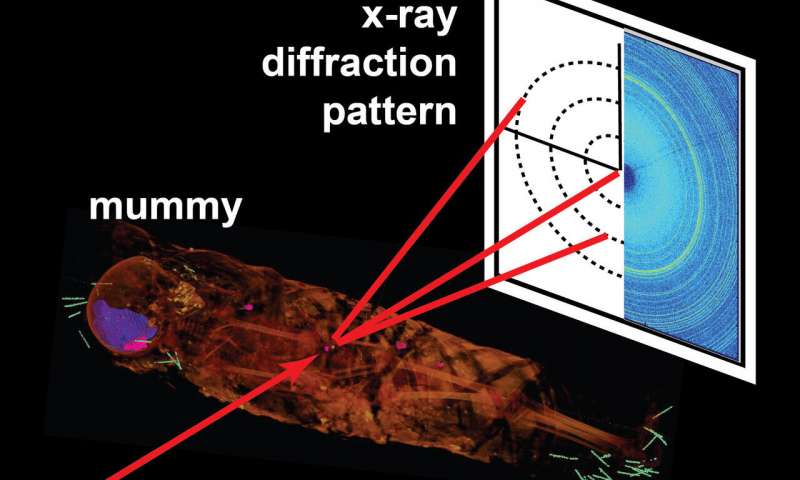
X-ray diffraction technique can reveal the material of an object inside the mummy
5-year-old child, nail marks and a scarab amulet
The portrait mummy preserved at Northwestern University is designated " Hawara Portrait Mummy No. 4". It was excavated between 1910 and 1911 at the Hawara site of ancient Egypt. The area is also part of the Fayum basin west of the Nile River, where portrait mummies are commonly found.
From the outside, this piece of wood on the head of this mummy number 4 depicts an adult woman. Oddly, however, the mummy was only the size of a child. Its length from the top of its head to its feet is only 937 mm and the extra fabric is only 50 mm thick. That is the reason that scientists want to confirm inside the body is actually a child or part of a woman's body.
Professor Stock scanned the CT X-rays from top to bottom to determine its structure. The results showed that this is the body of a child. The skull shows that even this child's permanent teeth have not yet grown. Analysis of CT results in the thigh showed that it was a child as young as 5 years old.
No bone damage has been reported, making the cause of the baby's death a mystery. Scientists only knew it could be a mild, painless death.
After determining the structure of the mummy with CT X-rays, the scientists discovered some anomalous structures and projected a thin stream of X-rays that diffracted on it. Usually, previous CT scans are of low resolution and will not allow looking at these small structures.
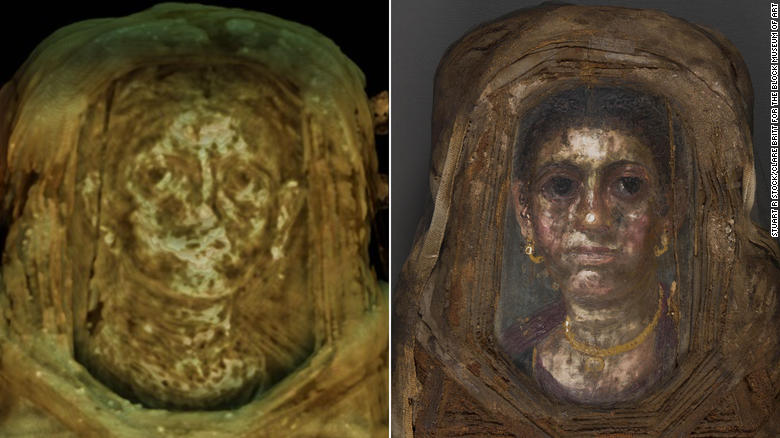
Despite the face of an adult woman being drawn, the mummy underneath this face is a 5-year-old child who has not yet teething.
On the body of the corpse, for example, Professor Stock discovered an elliptical object about 7 mm long. They named it "Inclusive F". Diffraction X-rays revealed for the first time the material of this ellipse, it was made of calcite, the most stable form of limestone found in nature.
"This opaque object has a shape that matches a scarab, " explains Professor Stock. In ancient Egyptian culture, "scarab beetle is a symbol of rebirth".
Most likely, this scarab was placed on the child's stomach like a charm. Usually, Egyptian mummies would place their amulets on the damaged body during the procedure. This amulet is thought to protect the weak point on the dead person's body when going to the other world, Professor Stock explained.
In addition, X-ray diffraction revealed 36 structures that resemble needles around the mummy. 11 of them appear on the neck and head, 20 needles are near the feet and the remaining 5 are on the body.
The material to make these needles or pins is metal, but Professor Stock said it seems that these needles are very new, only penetrating the body a century ago.
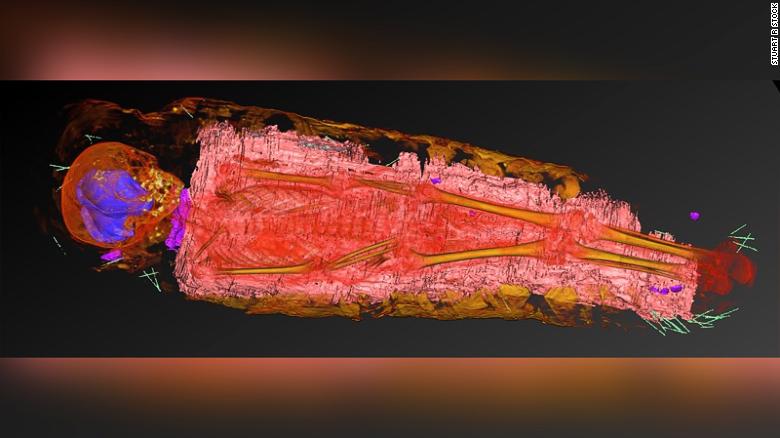
Inside the mummy are very new metal nails, which seem to have been pierced about 100 years ago.
It is not clear who did this and for what. "Every time you do a research like this, you get more questions than answers," says Professor Stock . In the future, scientists will continue to improve their X-rays to increase their resolution. At that time, more mysteries of the Egyptian mummy will be answered.
Future X-rays are expected to reveal even more sophisticated structures within the mummy, even including patterns carved on objects without opening them.
The new study is published in the Journal of the Royal Society Interface .
See Sciencealert, Phys, CNN
You should read it
- Find the most ancient Egyptian mummy tattoo icon
- Excavation of a thousand-year-old Egyptian tomb reveals the mummy in an 'intact' state.
- Greco-Roman mummy was discovered in Fayoum
- Marvel at the mummy photos analyzed under modern CT Scan technology
- The groundbreaking archaeological findings about ancient Egypt
- 7 horrifying facts about ancient mummies
- The mummy found in the tomb of Elephantine may be at the end of the ancient Egyptian period
- 56 mummified bottles were found at Deir el-Bahari
May be interested
- Mummy of 2,500-year-old princess carries a mysterious tattoo
 mummy of a thousand-year-old princess with many tattoos is very similar to modern times, which makes archaeologists wonder.
mummy of a thousand-year-old princess with many tattoos is very similar to modern times, which makes archaeologists wonder. - Greco-Roman mummy was discovered in Fayoum
 an egyptian and russian archaeological mission operating in deir al-banat area of governor fayoum's qalmasha discovered a wooden coffin with mummies dating from the greek-roman period .
an egyptian and russian archaeological mission operating in deir al-banat area of governor fayoum's qalmasha discovered a wooden coffin with mummies dating from the greek-roman period . - Discover the mysterious mummification process of the ancient Egyptians
 we are quite familiar with mummy images in egypt through famous hollywood movies. so, in fact, how did the ancient embalming process of ancient egypt take place?
we are quite familiar with mummy images in egypt through famous hollywood movies. so, in fact, how did the ancient embalming process of ancient egypt take place? - Deciphering the mystery of consciousness, the human brain can work in 11 dimensions
 the blue brain project led by neuroscientist henry markham of the federal institute of technology lausanne (epfl) in switzerland has found that although we are used to seeing the world from a three-dimensional perspective, the brain does not. ours is filled with multidimensional geometrical structures
the blue brain project led by neuroscientist henry markham of the federal institute of technology lausanne (epfl) in switzerland has found that although we are used to seeing the world from a three-dimensional perspective, the brain does not. ours is filled with multidimensional geometrical structures - Great Pyramids of Giza and 4 mysterious anomalies have no solution
 great pyramid of giza - great pyramid of giza in egypt is not only the greatest pyramid work that humans ever built challenges every time limit but it also contains many geographic mysteries that make references ancient and historians headache decoding.
great pyramid of giza - great pyramid of giza in egypt is not only the greatest pyramid work that humans ever built challenges every time limit but it also contains many geographic mysteries that make references ancient and historians headache decoding. - The 2000-year mystery has yet to be solved for the giant drawings on the Nazca Plateau
 appearing from 2000 years ago, the strange lines called nazca lines (nazca lines) are considered one of the most mysterious and confusing mysteries in human history.
appearing from 2000 years ago, the strange lines called nazca lines (nazca lines) are considered one of the most mysterious and confusing mysteries in human history. - Nvidia's AI Bot creates the face of a real person
 artificial intelligence has grown rapidly. and one of the most impressive products is when an nvidia ai bot is able to create a very real random face image.
artificial intelligence has grown rapidly. and one of the most impressive products is when an nvidia ai bot is able to create a very real random face image. - 18 interesting facts about the human body that make you say 'miraculous'
 check out the 18 interesting facts about the human body that make you wonder how to say it below, ensuring you will be extremely surprised to see!
check out the 18 interesting facts about the human body that make you wonder how to say it below, ensuring you will be extremely surprised to see! - The plaster statue of King Akhenaten was excavated in Egypt
 an archaeological mission of england-egypt from cambridge university discovered a plaster statue of king akhenaten (circa 1300 bc) during excavation at tel el-amarna, minya of egypt.
an archaeological mission of england-egypt from cambridge university discovered a plaster statue of king akhenaten (circa 1300 bc) during excavation at tel el-amarna, minya of egypt. - Is the 'alien skeleton' found in Peru true?
 join us to find out if the alien skeleton found in peru is real or not!
join us to find out if the alien skeleton found in peru is real or not!










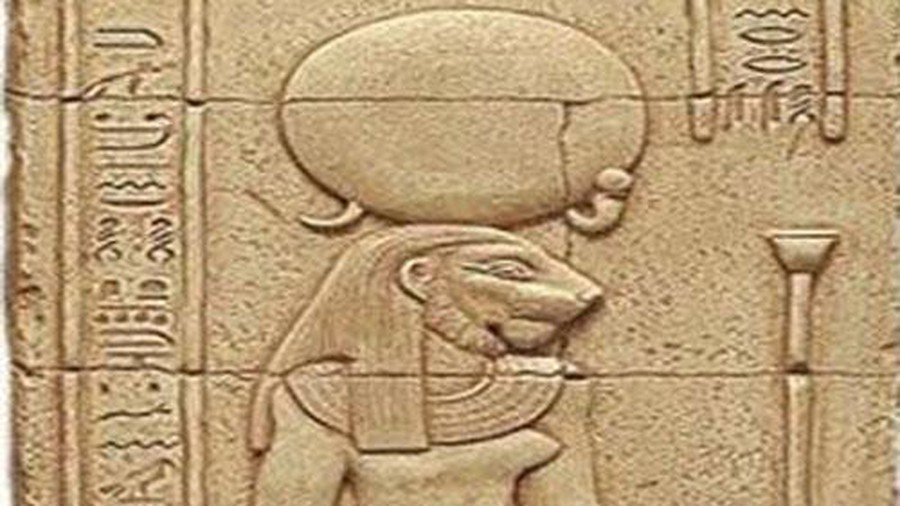 Decode the symbol of the ancient Egyptians
Decode the symbol of the ancient Egyptians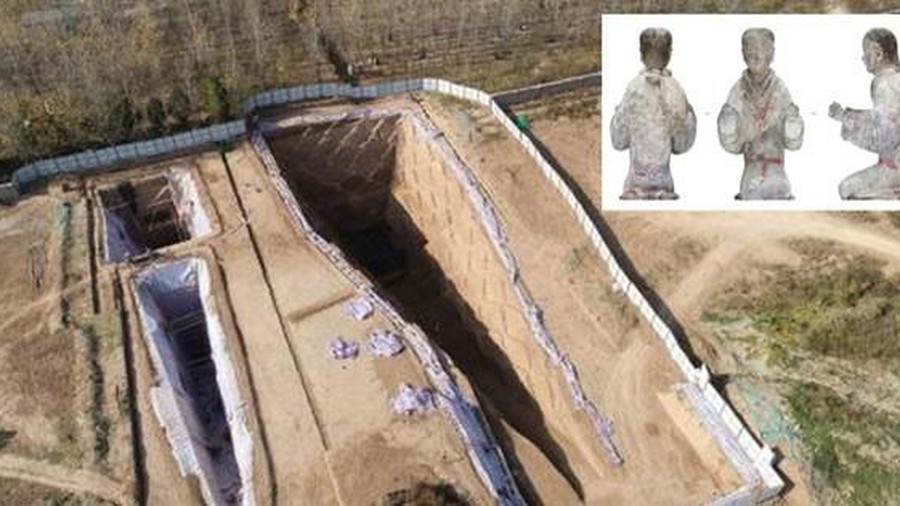 Treasures of death: A series of remains covered with jewels in the tomb
Treasures of death: A series of remains covered with jewels in the tomb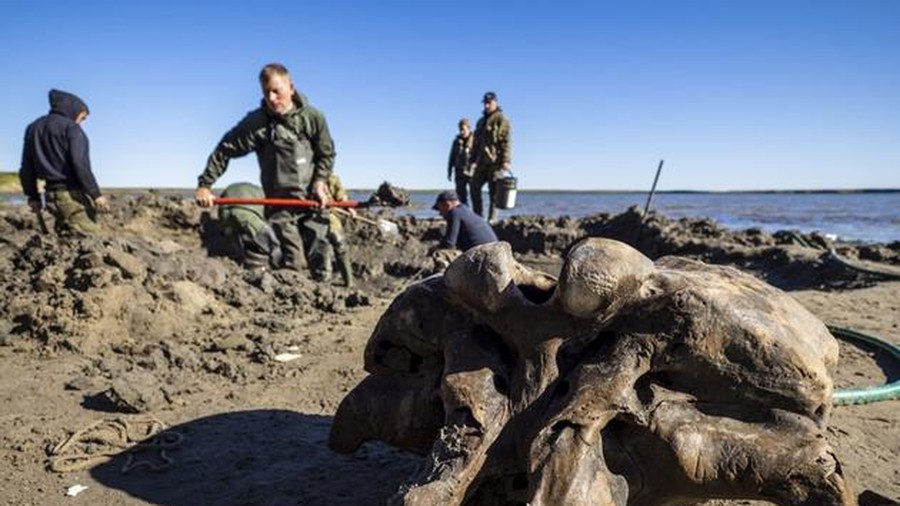 Discovering mammoth bones that remain in ligaments after more than 10,000 years of extinction
Discovering mammoth bones that remain in ligaments after more than 10,000 years of extinction Secrets about the world's smallest dinosaur revealed in amber 99 million years old
Secrets about the world's smallest dinosaur revealed in amber 99 million years old Admire the rare design of Yale University Library, helping to protect millions of valuable ancient bibliographies from the sun
Admire the rare design of Yale University Library, helping to protect millions of valuable ancient bibliographies from the sun What gadgets made the storm in the 90s, but no one is using it today?
What gadgets made the storm in the 90s, but no one is using it today?